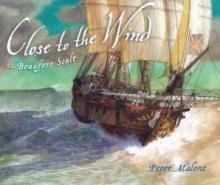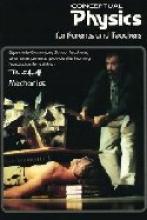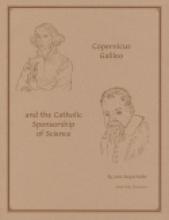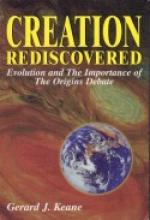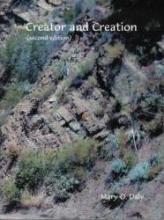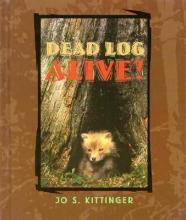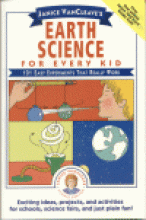Science
Christian Kids Explore Chemistry
City: A Story of Roman Planning and Construction
Various editions available
Close to the Wind
Conceptual Physics for Parents and Teachers, Book One: Mechanics
Subtitle: Especially Elementary School Teachers, who, after parents, provide the learning foundation for children The Conceptual Physics series is designed to make scientific concepts more accessible to parents and teachers. The hope is that a greater understanding on our part will lead to more and better information for children at a young age so that they might begin to develop an interest in science and the wonders of the world around them. The author explains that the current emphasis in education seems to be on the process of how we came to understand certain things and that many students leave school without understanding basic concepts of gravity, motion, etc. His book is an attempt to remedy that situation.
I think the author does a commendable job at fulfilling this task. Although he introduces readers to the mathematical expressions used to describe certain concepts, his emphasis is on helping the reader to understand the concepts themselves. Mr. Hewitt has given the book a great deal of personality. Rather than being very "textbook-like", studying the book has more of the feel of going through the basics with a good highschool teacher - humor, interesting tidbits, etc. His explanations, profuse "real-life examples" and an ability to anticipate common misunderstandings do make these concepts accessible. I'm not going to pretend that working your way through this book is a breeze. For a rather non-scientific person like myself it required a bit of determination, particularly in getting started. However, once I got into the book a bit, I found it both engaging and interesting. The author clearly wants to make you think rather than simply filling you head with information. At one point he even mentions that "Good teaching isn't providing answers–it's asking good questions." Like any good teacher, he challenges you while keeping you interested. There are little question and answer sections scattered through the text to ensure that you're staying on track (I'm happy to say that I was able to answer most of these correctly). I especially enjoyed the experiments. They are simple enough to try at a moment's notice and even my children, who are ages six and under, were delighted to try them out with me. These experiments led to a lot of "ooh"s and "wow"s and some good discussions around the dinner table. Clearly, in my family, the aim of the author was accomplished.
The book covers a substantial quantity of information, including the following concepts: equilibrium, vectors, tension, motion, speed, velocity, acceleration, free-fall, mass, weight, force, friction, pressure, momentum, bouncing, energy, work, power, efficiency, rotational motion, torque, center of gravity, stability, and gravity. He frequently relates these concepts to interesting, "real-life" situations such as calculating the "hang-time" of basketball players, explaining how people can walk on broken glass or lie on a bed of nails without getting hurt, why long poles help tightrope walkers balance, how gravity causes tides and even a bit about black holes. Obviously this is a lot of material to cover in a book of 179 pages. He doesn't explain the entire history of how we've come to understand each concept, but focuses on helping the student understand how these concepts work based on scientific research to date. Anyone who studies the book will have a much greater understanding of physics than the average American. For some this may even be a springboard for a much greater interest in Science.
The only real problem I had with the technical chapters of the book (1 - 8) is a slightly belittling tone the author takes toward Aristotle. It comes in the context of Galileo and Newton's advances in understanding motion which revolutionized the beliefs of their day which had originated with Aristotle. I think it's largely due to his informal style and probably not intentional, but I think it's a point worthy of mention. I want to instill in my children a respect for the great thinkers of the past. It's easy for us today to become arrogant about our technological advances, but I think we need to remember how much of our progress today would have been impossible without those who preceeded us.
The final chapter (9) is entitled "On Science." Here the author presents some of his philosophies about what science is. He also makes some very useful distinctions about the meanings of words in a scientific context as compared to "ordinary speech". I thought his explanations about the attitudes required of a good scientist were very helpful. There is a lot of very good food for thought in this chapter and some particularly excellent quotes. One of my favorites was, "In your education it is not enough to be aware that other people may try to fool you; it is more important to be aware of your own tendency to fool yourself." (People would do well to consider that idea in any profession!) I was impressed with his sincerity and surprised by how well he presented the idea of the complementarity of science and religion (for a secular text). This was particularly enhanced by a quote of Einstein's he includes: "Science without religion is deaf; religion without science is blind." We Catholics aren't afraid of science. We believe that faith and reason work together. (An abundance of excellent reading material on this topic can be found on the Internet. I recommend the website: Creation, Creationism and Empirical Theistic Arguments and Pope John Paul II's encyclical On Faith and Reason (Fides et Ratio).)
Unfortunately I found some areas of the last chapter where the author goes beyond the realm of his expertise and includes some statements which lack the clarity present in most of his text. I think that he muddles some points by using controversial subjects as examples. Also expect a few "off-the-wall" comments such as "Truth is a word seldom used in science (it seems to me that those who say they seek only 'the truth' are more often seeking confirmation of what they already hold as true, and anything found that contradicts rather than supports, is discarded)."[p. 165] and "It was then that I learned that right and wrong are relative terms. By definition, we're right and they're wrong. Few of us question what we've been taught to believe." [p. 166]
In good natured curiosity then, if right and wrong are relative terms and science does not concern itself with the truth, how can the author be so sure that Aristotle was wrong?
You can read more about this title on the Focus Publishing Website.
black and white illustrations and photos
Copernicus, Galileo and the Catholic Sponsorship of Science
The Galileo controversy is a big issue for Catholics and non-Catholics alike. Any number of resources commonly used by Catholic homeschoolers (such as Protestant high school science texts, certain biographies, novels, and many more) will portray this issue incorrectly. Homeschool parents teaching their children about faith and reason and homeschool students preparing to go out into the "real world" cannot afford to be clueless about this issue. I highly recommend this resource.
Creation Rediscovered
This substantial book covering a wide range of topics relating to the great origins debate attempts to synthesize modern, largely Protestant, scientific arguments and evidence for a literal interpretation of the biblical creation story with Catholic teaching. Mr. Keane, a Catholic layman, has obviously studied these issues for many years and believes that such a stance regarding Origins questions - including a young earth (of about six thousand years), a direct creation taking place in six days and a rejection of all forms of evolutionary theory - is essential for the survival of the Catholic faith.
For my part, I found this book rather frustrating for a number of reasons. First, although there is a great deal in the book which is true and good and that I would readily agree with, this is, for the most part, rather obvious stuff for a faithful Catholic. Beyond this, there is a great deal of speculation, assumptions and logical fallacies amidst assertions that are, generally speaking, treated as essential to Catholic belief. To make things more complex, the author writes with a very persuasive tone - appealing to good people's faith and frustration with evil to accept his opinions. The problem is that many of his first principles are true, such as that God is omnipotent (e.g. "There should be no difficulty involved for Christians to believe that God could do this, because He is omnipotent and could have suspended the creatures' normal behavior patterns." pg. 67), but they do not necessarily point to the specific conclusions that Keane wants them to.
In my email discussions with the author I have been very up front about my frustrations with his book as well as my lack of knowledge regarding many of it's scientific details. I'm not capable of sorting out all the ups and downs of this book nor of writing with great clarity about many of the issues (particularly the scientific ones). I think my greatest weakness is not being very familiar with the different possible theories regarding Origins that fall within legitimate Church teaching. Nevertheless, I can say with great certainty that the teachings of the Catholic Church are very logical and that the Church highly respects the relationship between faith and reason. Because of the poor scholarship of this book, which includes many logical fallacies and speculative arguments, I am very skeptical of its value as a source of Catholic teaching, no matter how many of its conclusions are true. I'm always one for a lively discussion about these issues and I don't necessarily have a problem with creationist theories being presented in a humble fashion and under the guidance of the Church. Unfortunately, in addition to the weak scholarship, Mr. Keane writes with an authoritative tone which may confuse readers about true Church teaching.
A brief overview of my main problems with the book:
- The author declares essential to our faith a number of points not recognized by the Church as essential (e.g. a literal 6-day creation week)
- The author appeals to our trust in God or belief in Jesus Christ to lend credibility to his arguments as if his is the only "godly" position. e.g. Keane reminds us over and over that God is incapable of error and that God was the only witness to creation, etc., which is all true, but that doesn't necessarily mean that Keane's interpretation of Genesis is correct.
- The author uses questionable Protestant soures such as the Institute for Creation Research as major scientific sources for his arguments. They're not bad simply because they're Protestant, but in the case of ICR, I believe that their flawed theology has led to flawed science. I believe there is no contradiction between Catholic teaching and the scientific method. In contrast, I believe that some of ICR's fundamental principles are incompatible with the scientific method. "All things in the universe were created and made by God in the six literal days of the creation week described in Genesis 1:1-2:3, and confirmed in Exodus 20:8-11. The creation record is factual, historical, and perspicuous; thus all theories of origins or development which involve evolution in any form are false." (ICR Tenet 3)
- The author cites Church documents and Biblical quotes that do not self-evidently support his assertions.
- He continually misrepresents other possible Catholic theories by implying (numerous times) that Catholics who believe in some form of evolution are on par with Teilhard de Chardin or other dissident theologians and that the alternative to a literal interpretation of Genesis is a mythological one. It is both illogical and unfair to define or explain something according to its most extreme example. For example, I'm sure that Mr. Keane would agree that it is unfair to characterize all pro-lifers in terms of people who shoot abortion doctors.
- By his own admission, he disagrees with a distinguished list of great Catholics in various particulars of his theory, including: Pope John Paul II (pg. 202-206) , Father John Hardon (pg. 244), Pope Pius XII (pg. 199-200), St. Thomas Aquinas (pg. 257-258) and St. Augustine (Ibid) . Please click here to read the specific quotes about each disagreement. I certainly agree that all of these authorities are capable of error, however Mr. Keane has failed to give me reason to trust his arguments and opinions over these others. Overall, my impression is that Mr. Keane appeals to authorities (particularly Catholic ones) when they support his position, and reminds his readers that authorities can err when they don't support his position.
Here is a collection of quotes from the book to give a sense of the style and content:
(pg. 242) "In the opinion of this writer, because of many conceptual problems, there is no credible third position between a young Universe without Evolution and an extremely old Universe with Evolution. When fully considered, the opposing set of beliefs could hardly be more different and do not really allow for another position."I personally am still trying to sort out the cacophony of opinions being offered in the Creation/Evolution debate. I get exasperated both by public television programs that bend over backwards to avoid discussing any concept of intelligent design and Protestant science texts that ram it down your throat in every paragraph. Amongst all this chaos I rejoice in the great writings of the Catholic Church, such as Humani Generis, that define - with great clarity and simplicity - what is known to be true (and why) and what is still open to discussion and further understanding. Unfortunately, when I read Keane's work, I have more of the sense of someone, however unintentionally, manipulating these great works to fit his own particular ideas.(pg. 109) "This concept of punctuated equilibrium was proposed by Stephen Jay Gould and Niles Eldredge and represents, at least in some of its more extreme manifestations, a partial return to the 'hopeful monster' idea."
(pg. 257) "Christ, the omniscient Creator/Redeemer who cannot deceive, knew that Scriptural passages would be grossly distorted and disbelieved many centuries later in an era plagued with doubts about Christian doctrine. As well as asserting that fidelity in marriage is most important, He may have included the reference to Creation to confirm to 20th century Christians that human beings were indeed created very soon after the creation of the Universe. Jesus would have known that all this was true and would simply be speaking in the context of actual history."
(pg. 235) "As to the scientific truth of the geocentrism/heliocentrism issue, it may be too soon to know if all the astronomical data is available and if all scientific aspects are fully understood. Some researchers argue that a valid scientific case can still be made for geocentrism, and various experiments have been conducted with respect to solar eclipses. Unfortunately, direct observation from outer space is impossible; to observe the solar system fully, in order to judge relative motion, would require traveling an impossibly long distance away from the Earth."
(pg. 264) "Even though human beings may never grasp fully the exact details of the Creation events this side of eternity, are we to be guided only by modern human experts who were not there at Creation, or rather, by what the divine Creator/principal Author of Scripture wished to reveal in Genesis via the human sacred writer(s)?"
New Oxford Review, a very conservative Catholic publication has published several critiques of Mr. Keane's book. In September 2000, NOR published a 2 1/2 pg. review of Creation Rediscovered. A few quotations from the review give its overall sense...
"The 'information age' barrages us with more data than any person could posibly absorb or synthesize. The sort of universal knowledge which was sought by the philosophers of the classical age and reached its medieval height in St. Thomas's Summa is no longer seen as achievable by today's educators. Instead we find ourselves in an era of unlimited expertise. Most people receive not so much an education in the classical or medieval sense as training in some specific field.The dominant figure in today's learning is thus neither the philosopher nor the Renaissance man, but the techno-serf. Like his feudal counterpart, he is highly skilled in his own area of experience, but is not accustomed to thinking about matters outside his limited domain. When the techno-serf turns his gaze to concerns outside his common experience, he finds himself without an appropriate intellectual framework with which to analyze and systematize what he sees.
In the introduction to Creation Rediscovered, Gerard Keane proclaims himself to be neither a theologian nor a scientist but rather a peculiar synthesis of the two which he terms an 'Origins Researcher.' Given such ambitiousness, it is clear from the beginning that his book will be either the product of an unusually broad and well-educated mind or a desperate floundering between two disciplines, neither of which is well understood. (Brendan Hodge, "'Scientific' Literalism", New Oxford Review, September 2000, pgs. 44-45)
The review concludes, "it is incumbent upon those Catholics like Keane - who would rather retain a strictly literalist interpretation of creation - not to embarrass the Church by claiming the Church is committed to a teaching to which she is not. The dangers involved were pointed out by St. Augustine in the fourth century, and can be seen in the Galileo fiasco of the 17th century, which still has repercussions today. Rather, let us follow the lead of John Paul and "fear not" - even in a world that is increasingly difficult to completely understand."
The April 2003 edition of New Oxford Review includes an article by Dermott J. Mullan titled "Fundamentalists Inside the Catholic Church: A Growing Phenomenon". This article criticizes creationists in general, and Mr. Keane in particular for their insistence on a "Young Earth" understanding of creation.
Why do I find the young-Earth development troubling? Because it flies in the face of reason.In my profession as an astronomer, I am familiar with abundant evidence from the physical world indicating that the Earth and the Sun and the Universe have ages that are measured in
billions of years.The evidence for these ages comes from at least five distinct and independent areas of research in astrophysics: expansion of the universe, stellar structure, isotope dating, white dwarf cooling, and properties of the cosmic microwave radiation. The concordance of these five methods impressive because they rely on completely distinct types of observations, and different laws of physics, to arrive at their conclusions.
It is beyond the bounds of reason to suppose that, if the Universe were actually no older than a few thousand years (as the young-Earth proponents claim), many hundreds of researchers from diverse countries and all religious backgrounds would discover five completely different methods which all yield multi-billion-year ages. (Dermott J. Mullan, "Fundamentalists Inside the Catholic Church: A Growing Phenomenon", New Oxford Review, April 2003, pg. 32)
Now it is certainly true that New Oxford Review and their authors are capable of error, as am I. However, with all of Mr. Keane's throwing around of authorities who agree with him (and it should be noted that St. Thomas Aquinas describes argument from authority as the weakest form of argument), it's comforting to know that I'm not the only one who had problems with this book.
Sample quotes from Creation Rediscovered regarding disagreements with other Catholics:
a. Pope John Paul II (pg. 202-206) "Has Pope John Paul II been inaccurately informed by his advisers, to the deteriment of truth? Some of his other scientific comments made on October 22, 1996, seem most inconsistent with the actual findings of modern science..."
b. Father John Hardon (pg. 244) Mr. Keane includes this quote from Fr. Hardon on page 244 "The origin of planets, including the Earth, also has a variety of hypothetical explanations, but with one factor in common: The planets are derivatives from the stars. It is fairly agreed that the Earth and other planets are about four and a half billion years old."
c. Pope Pius XII (pg. 199-200) "In view of truth known from Tradition and highlighted by Cardinal Ruffini, why did Pope Pius XII even allow any discussion about the possible evolution of Adam's body, as though human Evolution could somehow be true? What need was there for further discussion - surely, enough was known already from Tradition? One can only speculate."
d. St. Thomas Aquinas (pg. 257-258) "With all due respect to the great Aquinas, his reason for not accepting the literal view, which he admits is more generally held in Tradition, seems quite astonishing."
e. St. Augustine (pg 257-258) "Despite this precedent within Tradition, the enchanting appeal of uniformitarian/evolutionary concepts made a profound impact upon many Church scholars in the last two centuries, with the result that the literal-as-given, obvious sense came to be considered virtually unbelievable. Perhaps some scholars were also influenced by the views of St. Thomas Aquinas, who preferred the theory of St. Augustine."
Previously reviewed on 3-20-03, 6-6-03, 6-23-03
Donated for review by TAN Books and Publishers
Creator and Creation (third edition)
Nihil Obstat, Imprimatur
Dead Log Alive!
This book provides an interesting and detailed look at what comes to live in and around a dead log – woodpeckers, squirrels, mushrooms, fungi, moss, molds, porcupines, foxes, snakes, scorpions, millipedes, centipedes, pill bugs, salamanders, ants, termites, and beetles. Includes many interesting color photos and details about each species, how to tell them apart and much more. The book also includes an index, a glossary and suggestions for further reading.
Earth Science for Every Kid
In the Van Cleave tradition, this book presents 101 experiments that are simple, yet informative, and can easily be performed in the home. The book covers seven major segments: Earth in Space, Rocks and Minerals, Crustal Movement, Erosion, Atmosphere, Weather and Oceans. Some experiments are designed to demonstrate, with simple objects, properties of the earth and its components such as "how the composition of the Earth affects its motion" and "how the speed and direction of air affect falling rain." These type of experiments generally cover things which can't be directly experimented with but can be understood through other things. Other experiments determine actual properties by experimenting with salt, water, ice, etc. to more directly understand how they work.

